REVIEW: Singin’ in the Rain at Mirvish
Mirvish has brought in a 2012 UK touring production of Singin’ In the Rain — get your umbrellas ready.
Playing at the Princess of Wales Theatre through the end of October, Singin’ In the Rain is two-and-a-half-hours of tightly choreographed pastiche and joy. Splashy to the point that the first few rows get wet, some audiences will no doubt enjoy the spectacle of shimmering costumes and high-brow buffoonery.
But with a single person visibly of colour performing in a cast of 28 and motifs fifty years removed from the Roaring ‘20s, there are problems here and they are not simply representational: it’s a historical production that doesn’t address its history. As with Mirvish’s other opening last week, just because Singin’ in the Rain is a great movie doesn’t necessarily mean it’s a great show. While this production of Singin’ in the Rain may bring the 1952 film to life for you, here’s why it didn’t for me.
“Spectacle” is this production’s operative word. Simon Higlett’s costumes are so colourful and bedazzled that Baz Luhrmann himself would blush. Higlett also created the mammoth-sized, dynamic sets. These aren’t just geographic in scope; they literally create weather events. As other reviews have gushed (pun intended), this production engulfs you, stormy weather and all, in the world of a film — particularly in the titular song and its encore. And yes, sometimes it’s just cool to experience such advanced stage technology.
Both the film and stage show centre around fictional silent film star Don Lockwood, played by master triple-pirouetter Sam Lips. Don is joined by Cosmo, the studio’s music director, attached to Don at the hip for reasons never addressed. Here, Alastair Crosswell approaches Cosmo (Mr. “Make ‘Em Laugh”) with gleeful energy and adept skill for physical comedy.
The central tension in Singin’ In the Rain is the advent of the “talkies,” and how the fictional Monumental Studio must shift its day-to-day practices. They’re concerned that the viewing public will realize Lockwood’s partner and their biggest starlet, Lina Lamont, has a voice and personality like sandpaper. Faye Tozer’s turn as Lina is the highlight of the production, a triumph in consistent antagonism. Never breaking from the affect of a prepubescent Brooklyn ruffian, Tozer curates a hilarious yet effectively original foil.
The corporation is experiencing this flux when Don has a chance encounter with a sweet-voiced stage actor. Kathy Seldon, played by the charming Charlotte Gooch, catches Don’s eye as she rides the waves of film industry change. But her success won’t be before she has to do the dirty work for the studio by pretending to be Lina Lamont’s voice to salvage otherwise unusable footage.
These are fine performances. But this Singin’ In the Rain encapsulates why fine performances alone may not make a great show. Even though this production aims to recreate the movie, director Jonathan Church and choreographer Andrew Wright take puzzling cuts and content liberties that make its characters and cast seem less well-rounded.
Gone are “Gotta Dance”’s famous green sequined dress, scar-faced quarter-flippers, and faux pas de deux ending. Gone is much of Zelda, the character played in the film by Rita Moreno. We instead get a white actor (Imogen Brooke) playing a Zelda that shows up three quarters of the way into the show. Instead of 1920s charleston and jitterbug, we get what appears to be choreography inspired by Bob Fosse (active from 1954 to 1983) and A Chorus Line (first premiered in 1975).
Another problem arises in underdeveloped characters, particularly Cosmo and Kathy. Basic dramaturgy asks: what are the supporting characters’ goals for personal and professional growth? What’s the world they’re living in? The answers could be rich; different casting choices could engage with the fact that not everyone in 1920s Los Angeles was straight and white. Just because the original has representation issues doesn’t mean that the revival should too.
Also, Ian William Galloway’s many long video projections of Lockwood and Lamont movies are head-scratchers. For a stage production transcribed from a movie, these could have been live-acted to great success. Why pay more to watch awkward videos onstage when you could watch a high-quality movie at home? These inserts deflate the liveness, and they lead to onstage recreations of Graumann’s Chinese Theatre that invoke more Orientalist fonts and symbolism than the original building does.
Altogether, this is a lot to overlook. I left the Princess of Wales feeling disappointed, when I was supposed to feel happy.
Of course the asterisk to my disappointment is the objective “I.” There’s no doubt that this production may inspire joy in many who watch it. It warrants “oohs” and “aahs” when Lips Lockwood strikes his umbrella on the water-soaked stage. Claps erupted on opening night at the expert synchronicity and astounding alliteration in “Moses Supposes.”
But my suggestion is to stay in, stay dry, and watch the original, along with the work of Vaudeville pioneers like the Nicholas Brothers, Josephine Baker, and Bill “Bojangles” Robinson.
Singin’ in the Rain runs at the Princess of Wales Theatre through October 23. Tickets are available here.

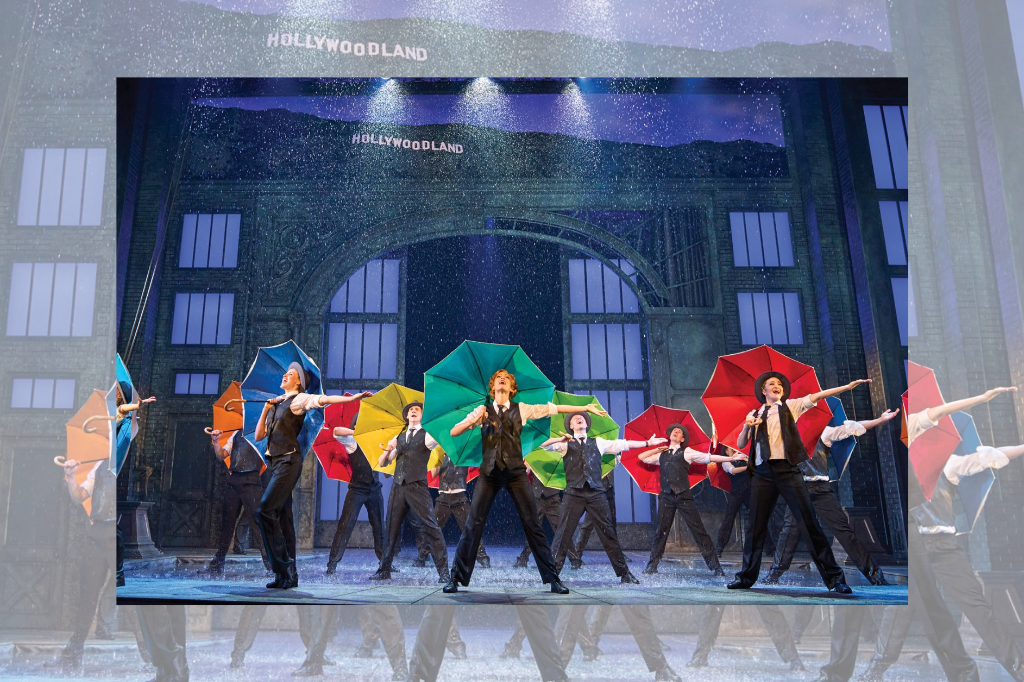







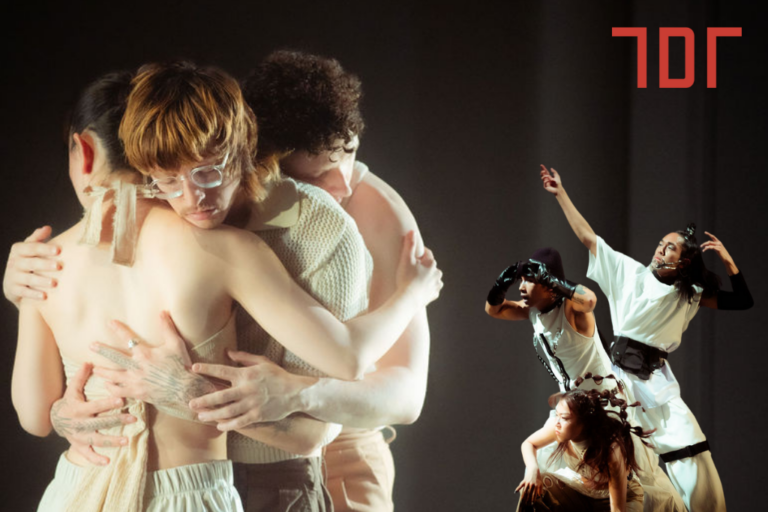
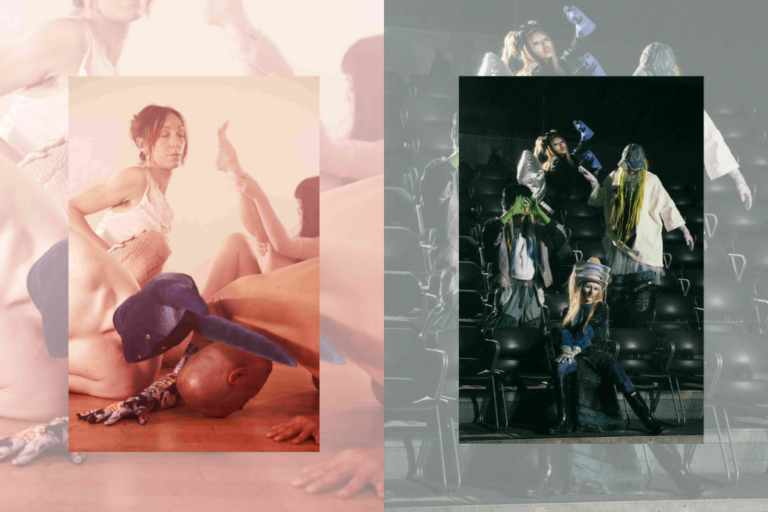
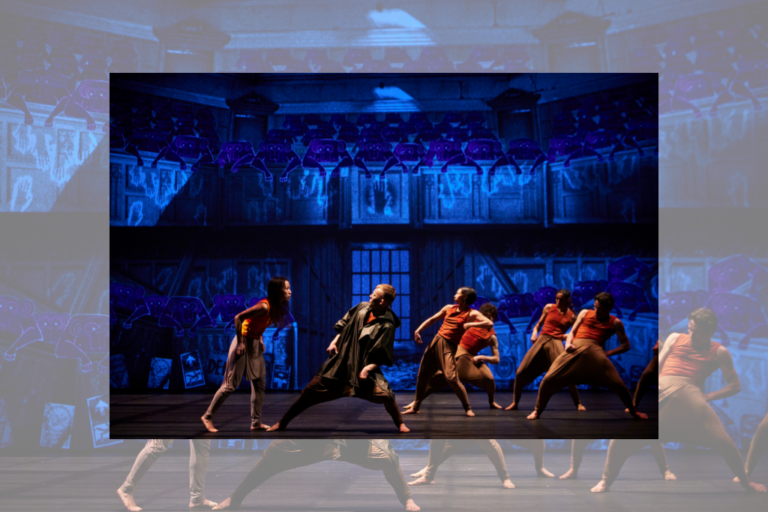

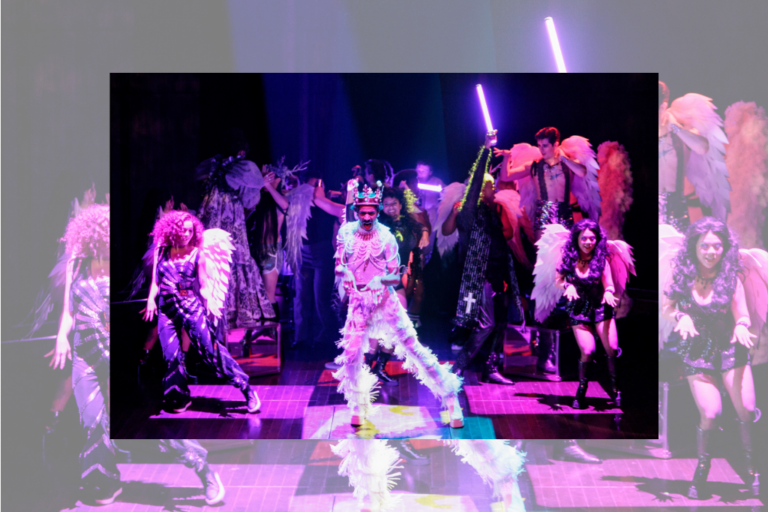
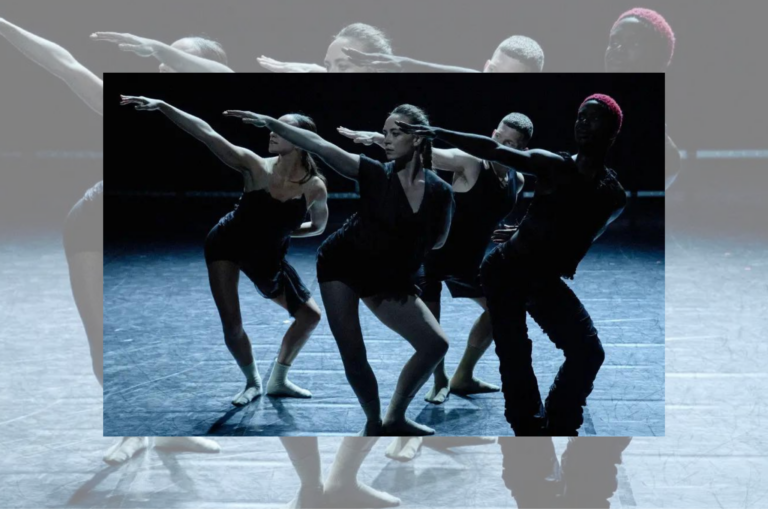
Comments